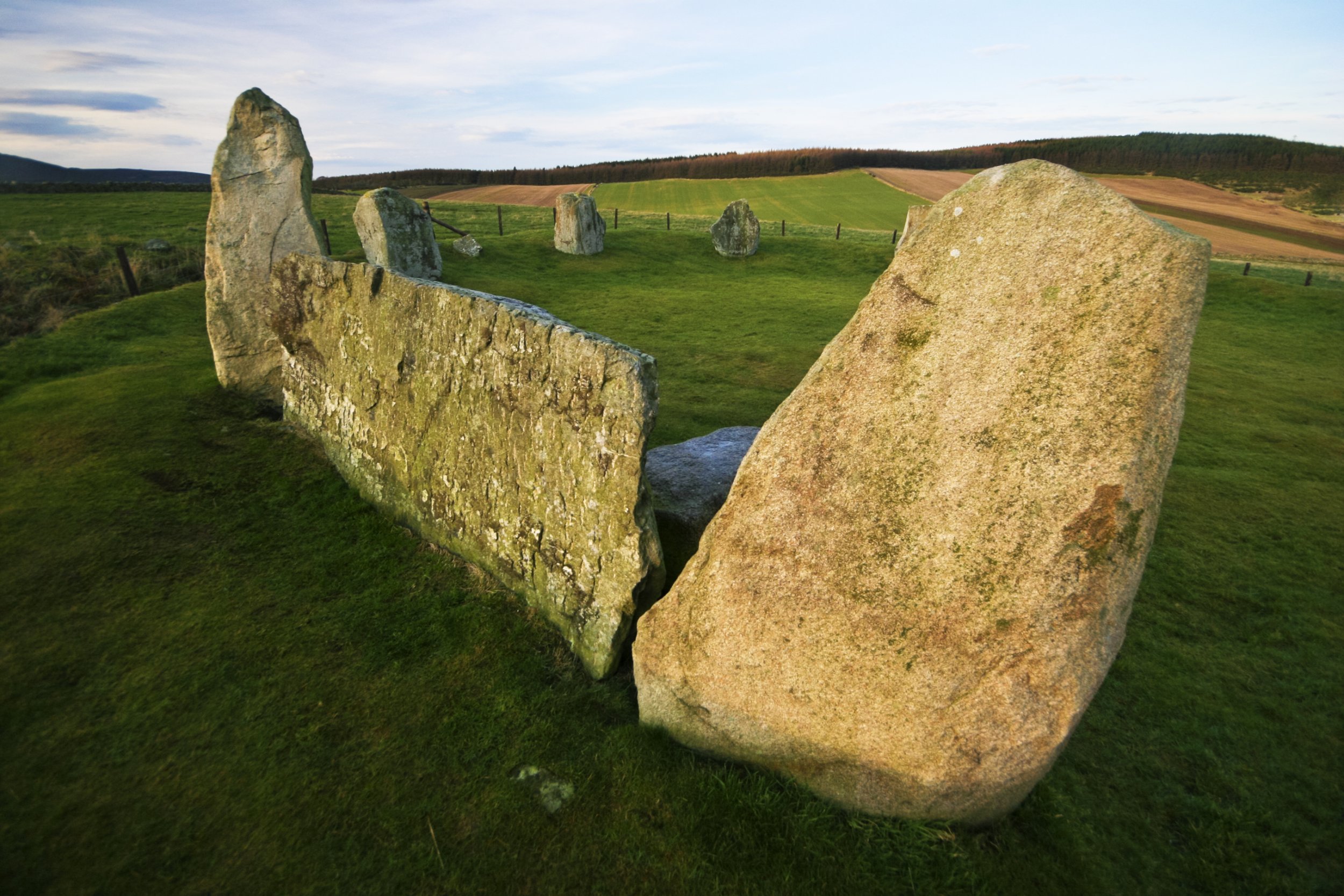
Archaeologists in Scotland were disappointed to discover a stone circle they believed was centuries old only dates back to the 1990s.
Researchers descended on the monument in Leochel-Cushnie, Aberdeenshire, in Scotland, when the current landowner reported the site to authorities. Archaeologists heralded the site as authentic, adding it to the list of "recumbent stone circles"—a rare type of circle found in the local area.
Read more: Eight ancient Egyptian mummies discovered in ornately decorated sarcophagi
But celebrations were cut short when the previous landowner told a representative of Historic Environment Scotland and Aberdeenshire Council's archaeology service that it was merely a replica, the council reported.
During their analysis of the site, archaeologists had noted it was relatively small and was missing some of the "cairn" or "kerb" stones one would usually expect. But the council said that this level of variation is not unusual.
Neil Ackerman, historic environment record assistant at Aberdeenshire Council, said in a statement: "It is obviously disappointing to learn of this development, but it also adds an interesting element to its story.
"That it so closely copies a regional monument type shows the local knowledge, appreciation and engagement with the archaeology of the region by the local community.
"I hope the stones continue to be used and enjoyed—while not ancient, it is still in a fantastic location and makes for a great feature in the landscape."
Recumbent stone circles, built some 3,500-4,500 years ago, are rings of rocks characterized by a large stone laid on its side between two pillars. Found in the north-east of Scotland, the Bronze Age rings are thought to have been built for astronomical purposes—to watch the movement of the sun and moon or to track the passing year, according to Forestry Commission Scotland.
Ackerman added: "These types of monument are notoriously difficult to date.
"For this reason we include any modern replicas of ancient monuments in our records in case they are later misidentified.
"We always welcome reports of any new, modern reconstructions of ancient monuments, especially those built with the skill of this stone circle and that reference existing monument types."
In other recent archaeological news, researchers recently discovered the world's first empire—the Akkadian Empire—fell as a result of climate changes that occurred more than 4,000 years ago.
Meanwhile in Mexico, scientists have uncovered a temple dedicated to Xipe Tótec ("Our Lord the Flayed One"). Archaeologists found a grisly statue depicting the deity cloaked in the skin of a victim.
Uncommon Knowledge
Newsweek is committed to challenging conventional wisdom and finding connections in the search for common ground.
Newsweek is committed to challenging conventional wisdom and finding connections in the search for common ground.
About the writer
Katherine Hignett is a reporter based in London. She currently covers current affairs, health and science. Prior to joining Newsweek ... Read more
To read how Newsweek uses AI as a newsroom tool, Click here.








